#Sultanzade Osman
Explore tagged Tumblr posts
Text



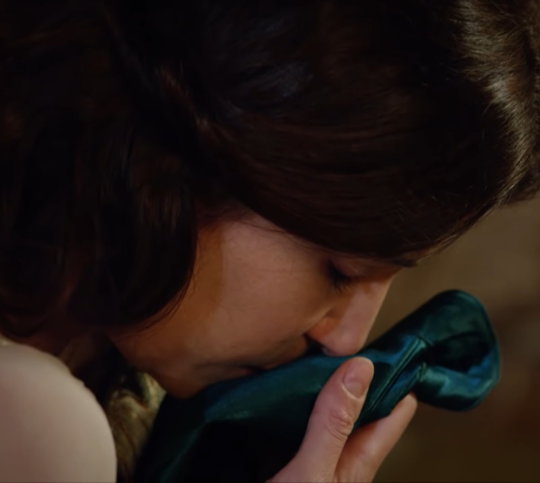

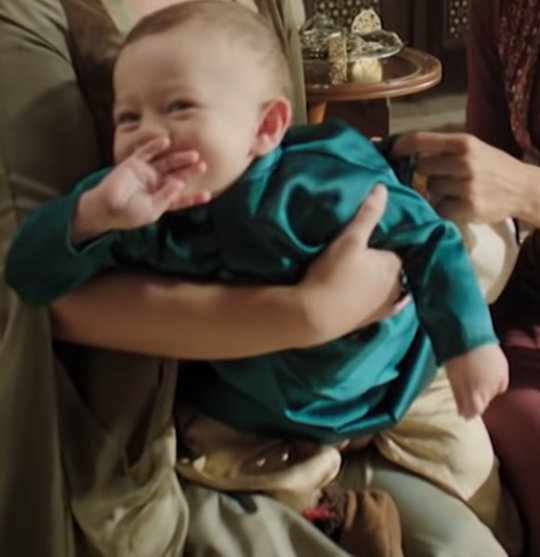

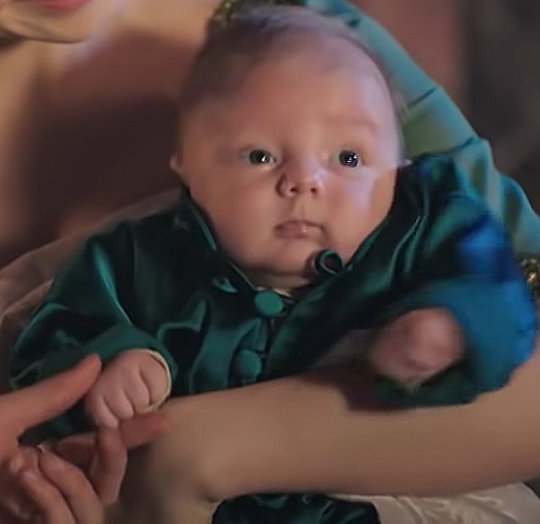


This teal blue shirt was in high usage during the run of Magnificent Century and its spin-off Magnificent Century: Kösem.
It first appeared in the ninth episode of the first season on Şehzade Mehmed. The shirt was used four times in the second season. First on Şehzade Bayezid in the third episode, then on Şehzade Selim in the ninth episode, then it lay among the clothes of the deceased Sultanzade Mehmed in the twelth episode and lastly it was worn by Sultanzade Osman in the thirtieth episode. The shirt was then seen again on Şehzade Cihangir in the fourth episode of the third season. It was also worn by Mihrimah Sultan's son Sultanzade Osman in the thirty-fourth episode of the fourth season.
Magnificent Century: Kösem used the shirt three times in its first season, first on Şehzade Mehmed in the thirteenth episode, then on Şehzade Ibrahim (later Sultan Ibrahim) in the twenty-first episode and lastly on Sultan Osman II's son Şehzade Mustafa.
#Muhteşem Yüzyıl#Muhteşem Yüzyıl: Kösem#Magnificent Century#Magnificent Century Kösem#Magnificent Century Kosem#period drama#costume drama#historical drama#Şehzade Mehmed (Son of Hürrem)#Şehzade Mehmed (Son of Kösem)#Şehzade Bayezid (Son of Hürrem)#Ibrahim I#Selim II#Sultanzade Osman (Son of Hatice)#Sultanzade Mehmed (Son of Hatice)#Sultanzade Osman (Son of Mihrimah)#Şehzade Mustafa (Son of Akile)#Şehzade Selim (Son of Hürrem)#Şehzade Cihangir#Sehzade Mehmed#Sehzade Bayezid#Şehzade Selim#Sehzade Selim#Sehzade Cihangir#Sultanzade Mehmed#Sultanzade Osman#Şehzade Mustafa
23 notes
·
View notes
Text
So, since I tend to consider Osman to be one of Ibrahim's children that receives a level of autistic coding, I'll admit, I had some interest in trying to piece together what his hyper-fixation/interest might be. (It's been somewhat joked about before that Ibrahim's own version of this is The Divine Comedy, for example.)
The issue, of course, is that there's not only incredibly few scenes with Osman overall, but even less where he actually speaks. In fact, one of the few times he does is after his sister, while their father details their future trip to Edirne, mentions that she wants to ride a horse—a desire that Osman very quickly seconds.


Initially, I was going to make some kind of joke about how, "Oh no, is our Osman a horse boy?"
Except then, in perhaps a bit of a stretch, I paused to think of other associations that Ibrahim's family has with animals. And, well, there's one major one, isn't there?


Falconry is an involved skill to learn and it, along with horseback riding, were closely linked to hunting excursions for men back in the day. So, I'd like to think that Ibrahim still carried a part of his falconry training with him and, after the children began to learn horseback riding, introduced Osman to falconry as well.
Basically, I think that Osman's special interest is animals and that, for a time, it allowed him to bond with his father. It sort of adds more understanding too, at least to me, for why Osman would be so disinterested in horseback riding in Edirne after Ibrahim's death—yes, he enjoys it, but it should be occurring with his father.


(This all, of course, has the added benefit of messing with Suleiman's head the moment he tries to take Osman hunting and our boy rocks up with a falcon in tow.)
9 notes
·
View notes
Text

ᯓᡣ𐭩 .ㅤ𝐻𝑢𝑟𝑖𝑐𝑖ℎ𝑎𝑛!ㅤ𝑌𝑜𝑢'𝑟𝑒ㅤ𝑠𝑜ㅤ𝑏𝑒𝑎𝑢𝑡𝑖𝑓𝑢𝑙...ㅤ𝑀𝑎𝑛𝑦 𝑚𝑒𝑛'𝑠 ℎ𝑒𝑎𝑟𝑡𝑠 𝑤𝑖𝑙𝑙 𝑏𝑒 𝑏𝑟𝑜𝑘𝑒𝑛...

✮⋆˙ㅤsweetvsymphonyㅤ;ㅤ presenting Huricihan Sultan, daughter of Ibrahim Pargali Pasha and Hatice Sultan, Sultanzade Osman twin sister, from ❛❛Magnificent Century❜❜. using polish & english language, faceclaims: emily carey & burcu ozberk.

128 notes
·
View notes
Text
Family tree of Ahmed I
Ahmed (1590.04.18. - 1617.11.22.) - Kösem (~1589 - 1651.09.02.)
Mehmed 1605. 03. 08. - 1621. 01. 12.
Ayse ~1606 - 1657
Fatma ~1608 - 1671 (before March)
Hanzade 1609 - 1650.09.
disputed: Selim 1611.06.27.-1611.06.27.
Murad IV 1612.07.27. - 1640.02.08.
Kasim 1614 - 1638.02.17.
Ibrahim 1615.11.05. - 1648.08.18.
Ümmügülsüm ~1616 (possibly) - after 1690
Ahmed (1590.04.18. - 1617.11.22.) - Mahfiruze (~1589 - ~1612)
Osman II 1604.11.03. - 1622.04.20.
disputed: Gevherhan ~1606 - after 1631
disputed: Cihangir 1609
disputed Bayezid 1612. 12. - 1635.07.27.
Ahmed (1590.04.18. - 1617.11.22.) - Unknown concubine(s)
daughter born in 1605 March
Hasan 1612.11.25. - ~1612
Hüseyin 1613.11.14. - 1617
Atike 1614 - 1670
Süleyman 1615 - 1635.07.27.
Abide 1618 - 1648(?)
Orhan (died as a child)
Zahide (died as a child)
Zeynep (died as a child)
Esma (died as a child)
Hatice (died as a child)
Marriages of Ahmed I's daughters:
Gevherhan: - Öküz Kara Mehmed Pasha 1612-1621 * one son (1620) - Topal Recep Pasha 1623-until her own death * Safiye Hanimsultan (~1624-?) - married Mehmed Pasha and was his widow in 1638/9 - married Sadrazam Abaza Siyavuş Pasha 1643-1656
Ayşe: - Nasuh Pasha 1612-1614 - bethroed to Şehit Karakaş Mehmed Pasha 1614 - Müezzinzade Hafiz Ahmed Pasha 1622-1632 * Sultanzade Mustafa Bey 1628-1670 * Sultanzade X - Silahdar Ahmed Pasha 1639-1644 - Voynuk Ahmed Pasha 1645-1649 - Ibşir Mustafa Pasha 1654/5-?
Fatma: - Murtaza Pasha 1622- - Şehid Ali Pasha 1624 - Çatalcali Kapudan Hasan Pasha 1624-1626 * Sultanzade Hasan ~1625 - Kara Mustafa Pasha 1626-? - Sarraç Mustafa Pasha 1629-1630/1 - Kaçanikli Mehmed Pasha 1631 - Canpoladzade Mustafa Pasha 1632-1636 * Sultanzade Hüseyin 1633-1680 * Sultanzade Süleyman 1635-1665 - Koça Yusuf Pasha 1637-1658 * Sultanzade Ömer 1637-after 1670 - Melek Ahmed Pasha 1661-1662 - Kanbur Mustafa Pasha 1663-1666 - Közbekçi Yusuf Pasha 1667
Hanzade - married or bethroed to Murtaza Pasha’s son 1622 - Bayram Agha 1623-1638 * one son - Nakkaş Mustafa Pasha ~1641-until her death * Sultanzade Abdülbaki Bey ~1642-after 1685
Ümmügülsüm - married or bethroed to one pasha in 1626 - Halil Pasha ?-1641/2 - Hersekzade Ahmed Pasha ~1642-1648
Atike - son of Ekmekçizade Ahmed Pasha 1618-? - Sofu Kenan Pasha ~1624-1652 - Doganci Yusuf Pasha 1652-until her death
Theories:
The daughter born in 1605 March being Gevherhan (and then she was not Mahfiruze's daughter).
Hasan being Mahfiruze's not Bayezid and they both died due to complications.
Zeynep being Mahfiruze's daughter as Osman II possibly had a daughter Zeynep (as there are two Zeyneps buried in Ahmed I's türbe), and since Zeynep is not a dynastical name, Osman may named her after his deceased sister. PS: One of the sarcofagies is for a grown woman, which can be a mistake, or maybe Osman's daugter Zeynep reached adulthood (would be strange as until now there is no evidence for an adult sultana called Zeynep during this period).
Identity of Abide: Now it seems that Abide was not a daughter, but an aunt of Ahmed I and so the daughter of Murad III, see more under Murad III's family tree.
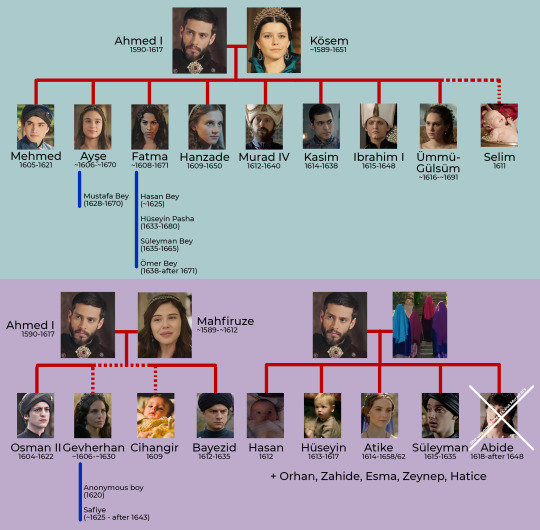
#ahmed i#history#ottoman history#ottoman empire#sultanate of women#mahpeyker kösem#kösem#mahfiruze hatun#haseki kösem sultan#ayse sultan#fatma sultan#hanzade sultan#atike sultan#abide sultan#ümmügülsüm sultan#gevherhan sultan#sehzade mehmed#sehzade kasim#sehzade bayezid#sehzade süleyman
24 notes
·
View notes
Note
Hello,I read somewhere that there is version in Secrets of the Ottoman court,private lives of the Ottoman sultans and Inside the Sergalio by John Freely,based on English ambassador Thomas Roe that during the second reign of Mustafa I,Halime Sultan and Kara Davud Pasha had plotted to execute all the survivng sons of Ahmed I and to ensure the throne for the son of Kara Davud Pasa and his wife who was imperial sultana and daughter of Halime Sultan- Sultanzade Suleyman Bey as the only heir of Mustafa I. The chief of the white eunuchs with his men secretly had gone to strangle the princes,but they had been stoped entering by palace guards who had informed the janissaries and sipahis who were on the outer guard of the palace and investigation had begun,in which the white eunuch and his men were executed,Kara Davud Pasa had lost his position as grand vizier,while the main culprit Halime Sultan had escaped punishment as she was consider mother of the saint Sultan Mustafa. Do you maybe know more about it?
This is what John Freely says:
Davut Pasha had married the valide's daughter, Mustafa's sister, who subsequently bore him a son named Süleyman. According to Sir Thomas Roe, the valide and her son-in-law concocted a plot to have all of the surviving sons of Ahmet I murdered, so as to leave Davut's son Süleyman as the only living male in the Osmanlı line other than Sultan Mustafa, who had fathered no children and resisted all attempts to introduce concubines into his harem. Thus the valide's grandson would inherit the throne, or at least she and Davut Pasha so hoped. The valide's henchman, the chief white eunuch, led a group of his men into the Old Saray to kill the young princes, but they were stopped by the palace pages. The pages alerted the Janissaries and Sipahis on duty around the palace, who apprehended the would-be assassins and hanged the chief white eunuch in the Hippodrome as a public spectacle. The soldiers demanded justice, and as a result Davut Pasha was dismissed as grand vezir, though the valide escaped punishment because of her privileged position as the mother of Sultan Mustafa, whose madness led the populace to consider him a saint. Soon afterwards the Janissaries did away with Davut Pasha, strangling him in the same chamber of the Castle of the Seven Towers where, on his order, they had killed Osman. — J. Freely, Inside the Seraglio, 37%.
This is what Thomas Roe says:
(I have fixed some of the spelling)
On Satterday evening, the first of June following, the capiaga or maior domo of the seraglio, having received a secret order to remove the brethren of Osman from their lodgings, and in the night to strangle them; as he was performing his command, ayded with a fewe of the carnifices to carry away the princes, they cryed out; the pages running to the noise, and encouraged by the caslariaga, who had some suspition, without further examination kill the capiaga; now almost every order having risen against their own head, that night they sent secretly to the Janizaries and Spahees to enform them what the had done, and in the morning early hanged his body in the Hippodrome for a publique spectacle. The soldours retorned in fury to court in favour of the pages, and demanded justice against those who had consented to this wicked order, which had made an end of all the Ottoman race, only this Mustafa left alive, who is so holy a saint, that he will not people the world with sinners, nor endure any women about him. The innocent king protests he knows nothing of this purpose, and if his command were procured, it was gotten by subreption; and he is easily believed. But his mother, another Livia, and the new vizier Daout bassa, who had her daughter to wife, were vehemently suspected. It was a day of divan or councill, but these soldiours would suffer none, until they had an accompt of this treason. The vizier denyes all, the mother is a woman, and hidden in the house, yet it is very likely that both were guilty, to uphold and secure their owne authority, it beeing rumored, that the vizier determined to place subditiously, in the roome of the elder prince, his owne sonne, and very like him, and so to governe Mustafa for a tyme, and by his remove to establish himselfe and his race for ever. — The negotiations of Sir Thomas Roe, in his embassy to the Ottoman porte, from the year 1621 to 1628, p. 52.
9 notes
·
View notes
Text
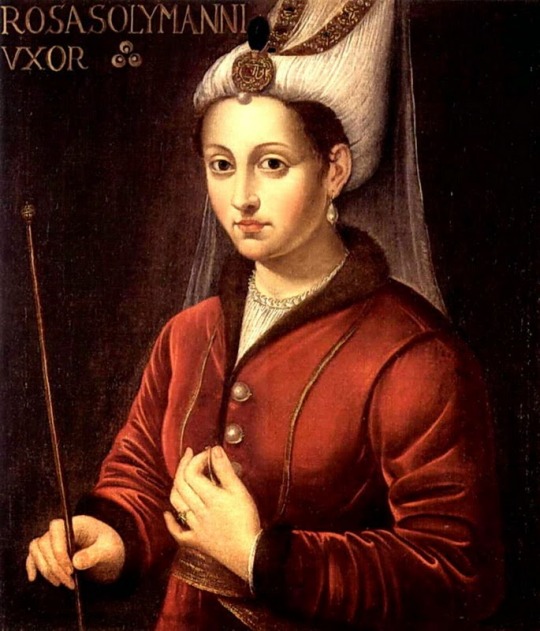

The other day I played the “Living People Related to Maria Theresa” game after a while, and remembered I once did that with Hurrem Sultan and thought I'd try it again, so here goes!
This is Roksan Kunter Özkan, she is a Turkish TV presenter, sports reporter, and media personality, and descends from Hurrem through her son Selim II. Supposedly her first name is derived from Roxelana, one of the names Hurrem was known by.
Roksan Kunter Özkan (Born August 10th, 1984) –> Ayten Sofia Nami Osmanoğlu –> Sultanzade Osman Nami Bey –> Ayşe Sultan –> Abdul Hamid II –> Abdulmejid I –> Mahmud II –> Abdul Hamid I –> Ahmed III –> Mehmed IV –> Ibrahim –> Ahmed I –> Mehmed III –> Murad III –> Selim II–> Hurrem Sultan
15 notes
·
View notes
Text
~Hümaşah Sultan~
Hümaşah was born Manisa. She might be born in autumn 1543 during visit of Hürrem Sultan or she might be posthume child of Sehzade Mehmed. According to historian Alderson, her mother's name was Aya. It is known that Aya was married off to Pertev Pasha. After Sehzade Mehmed's death, Hümaşah and Aya Hatun moved from Manisa to Istanbul, Old Palace. Hümaşah was close to her grandparents and her cousin, Ayşe Hümaşah, daughter of Mihrimah Sultan and Rüstem Paşa. Perhaps, both girls were educated together. Both of them were close to their uncle Sehzade Cihangir. Apparently an outgoing personality, the teenage Changir was the perfect uncle to his nieces.
In 1566/1567 Hümaşah was married off to the third Vezir, Ferhad Paşa. The marriage lasted 8-9 years till Ferhat Pasha's death on 06. January 1575. The ceremony took place in the Old Palace. From marriage with Ferhad Pasha she had several children. The known ones are: Sultanzade Hüsni, Sultanzade Osman, Fatma Hanimsultan, Sultanzade Ibrahim, Sultanzade Mustafa. They had at least 4 more daughters but the names are unknown, probably because they didn't reached adulthood. It appears that some of the childern were twins. In August 1575, Hümasah remarried to Sokolluzade Lala Mustafa Pasha. But the marriage lasted also till Lala Mustafa Pasha's death, on 7. August 1580. They had a son Sultanzade Sokolluzade Abdülbaki. Her third marriage took place in 1581 with Gaazi Mehmed Pasha who outlived Hümasah. They didn't have children together.Hümasah sultan also educated and trained Safiye and presented her to her cousin Murad, son of Selim Il and Nurbanu. Safiye lived in Hümasah's household after her abduction but Safiye's role in Hümasah's household is still unclear.
Hümasah Sultan died in 1582, the cause of death is unknown. She is buried in Shezade Mosque. The Mosque was built in honor of Hümasah's father, Sehzade Mehmed.
Her children are also buried in Sehzade's mosque.
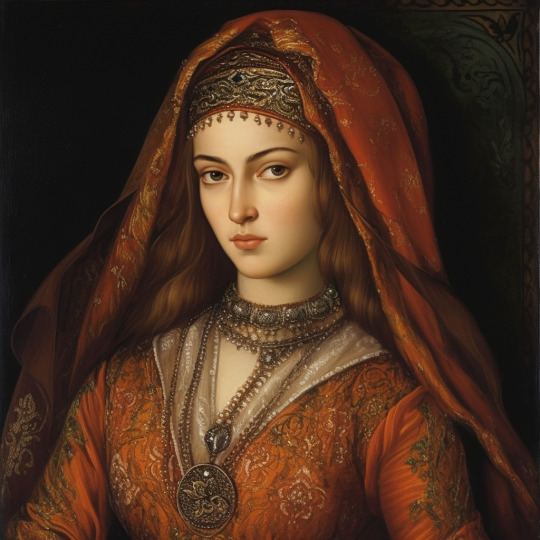
youtube
8 notes
·
View notes
Text
Sultanate of Women (2/7)
Mihrimah Sultan (19 March 1522 – 25 January 1578)




Daughter of Sultan Suleiman the Magnificent and Haseki Hürrem Sultan
Wife of Rustem Pasha
Mother of Ayse Hümasah Sultan and Sultanzade Osman Bey
Grandmother of Sultanzade Abdurrahman Bey, Saliha Sultan, Sultanzade Mehmed Bey, Safiye Sultan, Sultanzade Sehid Mustafa Pasha, Hatice Sultan, and Sultanzade Osman Bey
Mother-in-law of Şemsi Ahmet Pasha, Feridun Ahmed Bey, and Aziz Mahmud Hudayi
Fun Facts For Newbies: Since her mother Haseki Hürrem Sultan died before her son Selim became Sultan Mihrimah Sultan stepped in as Valide Sultan.
28 notes
·
View notes
Text
✔️ OSMANLI PADİŞAH VE SADRAZAMLARI
🔹 KURULUŞ DÖNEMİ(1299-1453)
👉 ORHAN BEY(1326-1362)
1. Alaüddin Paşa
Uyarı: Alaaddin Paşa ilk Osmanlı veziri ve Sadrazamıdır.İlmiye kökenlidir.
2. Süleyman Paşa
3. Mahmutoğlu Nizamüddin Paşa
4. Hacı Paşa
5. Sinanüddin Yusuf Paşa
👉 I.MURAT HÜDAVENDİGAR(1362-1389)
1. Sinanüddin Yusuf Paşa
2. Çandarlı Kara Halil Hayreddin Paşa
3. Çandarlı Ali Paşa
👉 I.BAYEZİD-YILDIRIM BAYEZİD(1389-1402)
1. Çandarlı Ali Paşa
👉 I.MEHMET-ÇELEBİ MEHMET(1413-1421)
1. Osmancıklı İmam-zade Halil Paşa
2. Çandarlı İbrahim Paşa
3. Amasyalı Bayezid Paşa
👉 II.MURAT(1421-1451)
1. Amasyalı Bayezid Paşa
2. Çandarlı İbrahim Paşa
3. İAmasyalı Hızır Danişmendoğlu Koca
4. Mehmed Nizamüddin Paşa
5. Çandarlı Halil Paşa
🔹 YÜKSELME DÖNEMİ(1453-1579)
👉 II.MEHMET-(FATİH SULTAN MEHMET) (1451-1481)
1. Çandarlı Halil Paşa
2. Veli Mahmud Paşa
Uyarı: ❗️Veli Mahmut Paşa devşirme kökenli ilk Osmanlı Sadrazamıdır.
3. Rum Mehmed Paşa
4. İshak Paşa
5. Gedik Ahmed Paşa
6. Karamani Mehmed Paşa
👉 II.BAYEZİD(Sofi Bayezid) (1481-1512)
1. İshak Paşa
2. Davud Paşa
3. Hersek-zade Ahmed Paşa
4. Çandarlı İbrahim Paşa
5. Mesih Paşa
6. Hadım Ali Paşa
7. Koca Mustafa Paşa
👉 I.SELİM-YAVUZ SULTAN SELİM (1512-15120)
1. Koca Mustafa Paşa
2. Hersekzade Ahmed Paşa
3. Dukakinoğlu Ahmed Paşa
4. Hadım Sinan Paşa
5.Yunus Paşa
6. Piri Mehmed Paşa
👉 I.SÜLEYMAN-KANUNİ SULTAN SÜLEYMAN(1520-1566)
1. Piri Mehmed Paşa
2. İbrahim Paşa
3. Ayas Mehmed Paşa
4. Lütfi Paşa
5. Hadım Süleyman Paşa
6. Rüstem Paşa
7. Kara Ahmed Paşa
8. Semiz Ali Paşa
9. Sokullu Mehmed Paşa
Uyarı: ❗️ Sokullu Mehmet Paşa; Kanuni’ nin son iki yılı, II.Selim Dönemi’nin tamamı, ve III.Murat döneminin ilk beş yolunda sadrazamlık yapmıştır.
Dolayısıyla Sokullu Mehmed Paşa(üç padişah döneminde Sadrazamlık yaptmıştır.
👉 II.SELİM-(SARI SELİM) (1566-1574)
1. Sokullu Mehmed Paşa
👉 III. MURAT : ( 1574 - 1595)
1. Sokullu Mehmed Paşa
2. Semiz Ahmed Paşa
3. Lala Mustafa Paşa
4. Koca Sinan Paşa
5. Kanijeli Siyavuş Paşa
6. Özdemiroğlu Osman Paşa
7. Mesih Paşa
8. Ferhad Paşa
👉 III.MEHMET(1595-1603)
1. Ferhad Paşa
2. Koca Sinan Paşa
3. Lala Mehmed Paşa
4. Damad İbrahim Paşa
5. Cığala-zade Sinan Paşa
6. Hasan Paşa
7. Cerrah Mehmed Paşa
8. Yemişçi Hasan Paşa
👉I.AHMET(1603-1617)
1. Malkoç Ali Paşa
2. Lala Mehmed Paşa
3. Derviş Mehmed Paşa
4. Kuyucu Murad Paşa
5. Nasuh Paşa
6. Öküz Mehmed Paşa
7. Halil Paşa
👉 II.OSMAN( Genç Osman) (1618-1622)
1. Halil Paşa
2. Kara Mehmed Paşa
3. Güzelce Ali Paşa
4. Ohrili Hüseyin Paşa
5. Dilaver Paşa
👉 IV.MURAT(1622-1640)
1. Kemankeş Kara Ali Paşa
2. Çerkes Hasan Paşa
3. Müezzinzade Hafız Ahmed Paşa
4. Halil Paşa
5. Hüsrev Paşa
6. Topal Recep Paşa
7. Tabanı Yassı Mehmed Paşa
8. Bayram Paşa
9. Tayyar Mehmed Paşa
10. Kemankeş Kara Mustafa Paşa
👉 SULTAN İBRAHİM(1640-1648)
1. Kemankeş Kara Mustafa Paşa
2. Civan Kapıcıbaşı Sultanzade Semin Mehmed Paşa
3. Salih Paşa
4. Kara Musa Paşa
5. Hezarpare Ahmed Paşa
6. Mehmed Paşa
👉 IV.MEHMET(1648-1687)
Uyarı: ❗️ IV.Mehmet Dönemin’de Köprülü ailesinden üç Sadrazam görev yapmıştır. Bunlar Köprülü Mehmet Paşa, Köprülü Fazıl Ahmet Paşa, Köprülü Merzifonlu Kara Mustafa Paşa'dır.
1656-1683 tarihleri arasına Köprülüler Dönemi denilir. Köprülü ailesinden altı sadrazam yetişmiştir.
1. Sofu Mehmed Paşa
2. Kara Murad Paşa
3. Melek Ahmed Paşa
4. Siyavuş Paşa
5. Gürcü Mehmed Paşa
6. Tarhuncu Ahmed Paşa
7. Derviş Mehmed Paşa
8. İpşir Mustafa Paşa
10. Süleyman Paşa
11. Deli Hüseyin Paşa
12.Zurnazen Mustafa Paşa
13. Boynueğri Mehmed Paşa
14. Köprülü Mehmed Paşa
15. Köprülüzade Fazıl Ahmed Paşa
16. Merzifonlu Kara Mustafa Paşa
17. Kara İbrahim Paşa
18. Sarı Süleyman Paşa
19. Siyavuş Paşa
👉 II.SÜLEYMAN(1687-1691)
1. Siyavuş Paşa
2. Nişancı Mehmed Paşa
3. Bekri Mustafa Paşa
4. Köprülüzade Fazıl Mustafa Paşa
👉 II.AHMET(1691-1697)
1. Köprülüzade Fazıl Mustafa Paşa
2. Arabacı Ali Paşa
3. Çalık Ali Paşa
4. Bozoklu Bıyıklı Mustafa Paşa
5. Sürmeli Ali Paşa
👉 II.MUSTAFA(1697-1703)
1. Sürmeli Ali Paşa
2. Elmas Mehmed Paşa
3. Amcazade Hüseyin Paşa(Köprülü ailesindendir)
4. Daltaban Mustafa Paşa
5. Rami Mehmed Paşa
🔹 GERİLEME DÖNEMİ(1699-1792)
👉 III.AHMET(1703-1730)
1. Kavanoz Nişancı Ali Paşa
2. Enişte Hasan Paşa
3. Kalaylıkoz Ahmede Paşa
4. Baltacı Mehmed Paşa
5. Çorlulu Ali Paşa
6. Köprülüzade Damad Numan Paşa
7. Baltacı Mehmed Paşa
8. Ağa Yusuf Paşa
9. Silahdar Süleyman Paşa
10. Hacı Halil Paşa
11. Nişancı Mehmed Paşa
👉 I.MAHMUT(1730-1754)
1. Damad Mehmed Paşa
2. Kabakulak İbrahim Paşa
3. Topal Osman Paşa
4. Hekimoğlu Ali Paşa
5. Gürcü İsmail Paşa
6. Seyyid Mehmed Paşa
7. Muhsin-zade Abdullah Paşa
8. Yeğen Mehmed Paşa
9. Hacı İvaz Mehmed Paşa
10. Nişancı Hacı Ahmed Paşa
11. Hekimoğlu Ali Paşa
12. Seyyid Hasan Paşa
13. Tiryaki Hacı Mehmed Paşa
14. Boynueğri Seyyid Abdullah Paşa
15. Mehmed Emin Paşa
16. Bahir Mustafa Paşa
👉 III.OSMAN (1754-1757)
1. Bahir Mustafa Paşa
2. Hekimoğlu Ali Paşa
3. Başdefterdar Naili Abdullah Paşa
4. Bıyıklı Ali Paşa
5. Mehmed Said Paşa
6. Bahir Mustafa Paşa
7. Koca Ragıp Mehmed Paşa
👉 III.MUSTAFA(1757-1774)
1. Koca Ragıp Mehmed Paşa
2. Hamza Hamid Paşa
3. Bahir Mustafa Paşa
4. Muhsin-zade Mehmed Paşa
5.Hamza Mahir Paşa
6. Hacı Mehmed Emin Paşa
7. Moldovancı Ali Paşa
8. İvaz-zade Halil Paşa
9. Silahdar Mehmed Paşa
10. Muhsin-zade Mehmed Paşa
👉I.ABDÜLHAMİD (1774-1789)
1. Muhsinzade Mehmed Paşa
2. İzzet Mehmed Paşa
3. Derviş Mehmed Paşa
4. Darendeli Cebecizade Mehmed Paşa
5. Kalafat Mehmed Paşa
6. Seyyid Mehmed Paşa
7. İzzet Mehmed Paşa
8. Hacı Yeğen Mehmet Paşa
9. Halil Hamid Paşa
10. Şahin Ali Paşa
11. Koca Yusuf Paşa
👉 III.SELİM(1789-1807)
1. Koca Yusuf Paşa
2. Meyyit Hasan Paşa
3. Gazi Hasan Paşa
4. Çelebizade Şerif Hasan Paşa
5 Koca Yusuf Paşa
0 notes
Text






This green and brown coat was first worn by Şehzade Selim (later Sultan Selim II) in the twenty-ninth episode of the second season of Magnificent Century. It was worn again by Sultanzade Osman in the twentieth episode of the third season. The coat appeared twice in the fourth season, first on Şehzade Mustafa's son Mehmed in the eighteenth episode and then on Şehzade Bayezid's son Mahmud in the thirty-fourth episode.
It can also be seen on Sultanzade Selim in the sixth episode of the second season of Magnificent Century: Kösem.
The coat appeared again on an unnamed boy in the seventh episode of the second season of Tozkoparan İskender.
#Muhteşem Yüzyıl#Muhteşem Yüzyıl: Kösem#Magnificent Century#Magnificent Century Kösem#Magnificent Century Kosem#Tozkoparan İskender#period drama#costume drama#historical drama#Şehzade Selim#Sehzade Selim#Selim II#Şehzade Selim (Son of Hürrem)#Sultanzade Osman#Sultanzade Osman (Son of Hatice)#Şehzade Mehmed#Sehzade Mehmed#Şehzade Mehmed (Son of Mihrünnisa)#Şehzade Mahmud#Sehzade Mahmud#Şehzade Mahmud (Son of Şehzade Bayezid)#Sultanzade Selim#Unnamed Istanbul Citizens#reused costumes#recycled costumes
8 notes
·
View notes
Text




This golden vest with a fur collar was first worn by Şehzade Cihangir in the twelth episode of the third season of Magnificent Century. It appears twice in the fourth season, first on Şehzade Mustafa's son Mehmed in the nineteenth episode and then on Mihrimah Sultan's son Sultanzade Osman in the thirty-fourth episode.
Magnificent Century: Kösem used the vest on Şehzade Osman (later Sultan Osman II) in the twentieth episode of the first season.
#Muhteşem Yüzyıl#Muhteşem Yüzyıl: Kösem#Magnificent Century#Magnificent Century Kösem#Magnificent Century Kosem#period drama#costume drama#historical drama#Şehzade Cihangir#Sehzade Cihangir#Şehzade Mehmed#Sehzade Mehmed#Şehzade Mehmed (Son of Mihrünnisa)#Sultanzade Osman#Sultanzade Osman (Son of Mihrimah)#Osman II#Şehzade Osman#Sehzade Osman#Şehzade Osman (Son of Mahfiruze)#reused costumes#recycled costumes
6 notes
·
View notes
Text





This golden coat was first worn by Şehzade Mustafa in the first episode of the first season of Magnificent Century. It was also worn by a teenage Mustafa in the twenty-fourth episode of the same season. The coat also appears on Sultanzade Osman in the sixth episode of the third season. It was also worn by Şehzade Cihangir in the thirty-third and thirty-seventh episode of the same season, respectively.
#Muhteşem Yüzyıl#Muhteşem Yüzyıl: Kösem#period drama#costume drama#historical drama#Şehzade Mustafa#Sehzade Mustafa#Şehzade Mustafa (Son of Mahidevran)#Sultanzade Osman#Sultanzade Osman (Son of Hatice)#Şehzade Cihangir#Sehzade Cihangir#reused costumes#recycled costumes
7 notes
·
View notes
Text
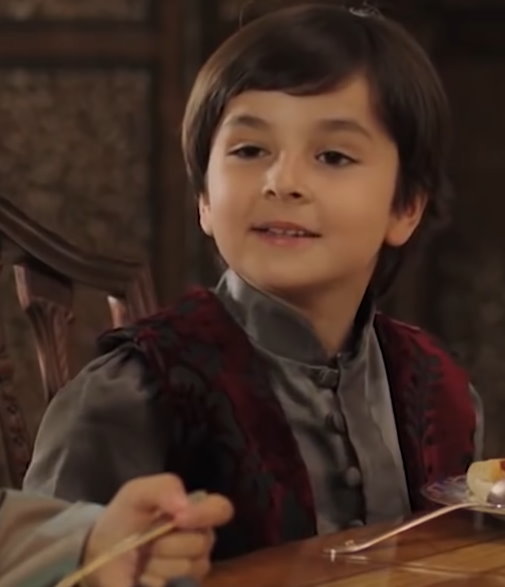

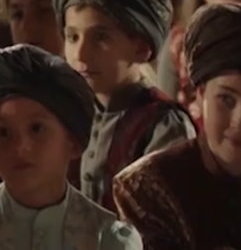
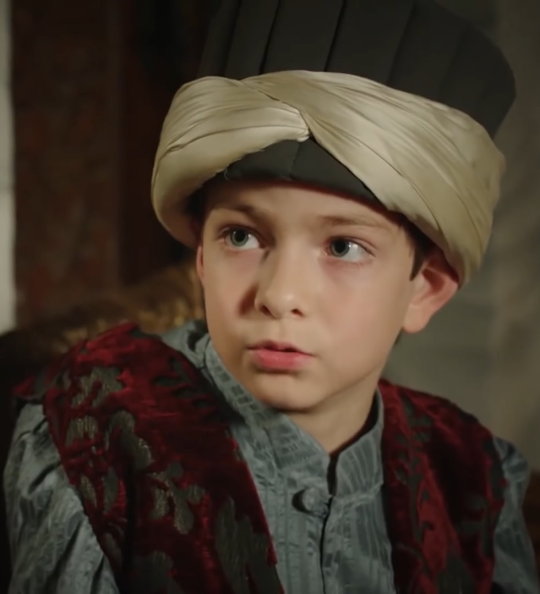
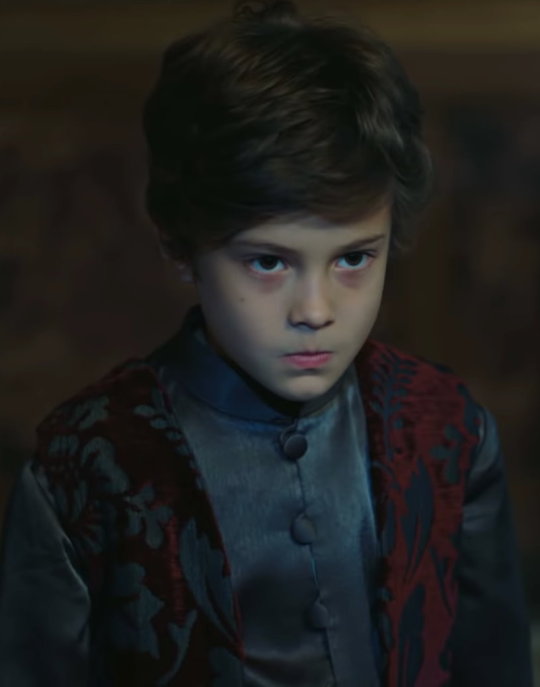
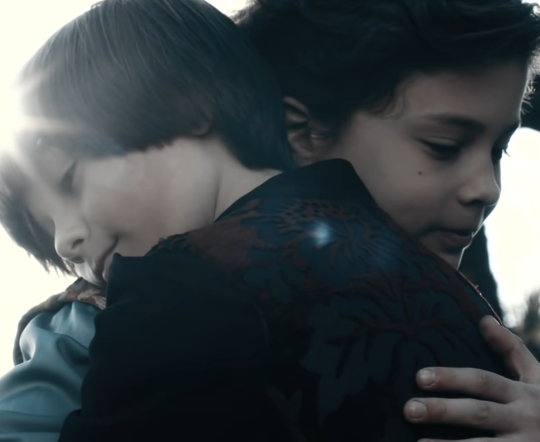
This red and black velvet kaftan was first worn by Sultanzade Osman in the seventh episode of the third season of Magnificent Century. The kaftan is worn again fifteen episodes later Osman's twin sister Huricihan Sultan. It is also worn by a guest in the thirty-sixth episode. The kaftan makes another appearance in the thirty-eighth episode on Şehzade Cihangir.
Magnificent Century: Kösem uses the kaftan twice. First on Şehzade Murad (later Sultan Murad IV) in the twenty-sixth episode of the first season and then on Şehzade Bayezid in the twentieth episode of the second season.
#Muhteşem Yüzyıl#Muhteşem Yüzyıl: Kösem#Magnificent Century#Magnificent Century Kösem#Magnificent Century Kosem#period drama#costume drama#historical drama#Sultanzade Osman#Sultanzade Osman (Son of Hatice)#Huricihan Sultan#Şehzade Cihangir#Sehzade Cihangir#Şehzade Murad#Sehzade Murad#Şehzade Murad (Son of Kösem)#Murad IV#Şehzade Bayezid#Sehzade Bayezid#Şehzade Bayezid (Son of Gülbahar)#reused costumes#recycled costumes
12 notes
·
View notes
Text





This dark blue coat with a brown fur collar was first worn by Sultanzade Osman in the twenty-sixth episode of the second season of Magnificent Century. It is worn again twice in the fourth season, first by Şehzade Orhan in the thirteenth episode and then by Şehzade Abdullah in the eighteenth episode.
The coat was also used twice on Şehzade Osman (later Sultan Osman II) and Şehzade Ibrahim (later Sultan Ibrahim) in the fifteen and twenty-first episodes of first season of Magnificent Century: Kösem.
#Muhteşem Yüzyıl#Muhteşem Yüzyıl: Kösem#Magnificent Century Kösem#Magnificent Century#Magnificent Century Kosem#period drama#costume drama#historical drama#Sultanzade Osman#Sultanzade Osman (Son of Hatice)#Şehzade Orhan#Sehzade Orhan#Şehzade Orhan (Son of Şehzade Bayezid)#Şehzade Abdullah#Sehzade Abdullah#Şehzade Abdullah (Son of Şehzade Bayezid)#Şehzade Osman#Sehzade Osman#Şehzade Osman (Son of Mahfiruze)#Osman II#Şehzade Ibrahim#Sehzade Ibrahim#Şehzade Ibrahim (Son of Kösem)#Ibrahim I#reused costumes#recycled costumes
10 notes
·
View notes
Text



This blue night gown was first worn by Sultanzade Osman in the twenty-first episode of the second season of Magnificent Century. It is worn again by Şehzade Cihangir in the twenty-ninth episode of the same season. The dress makes another appearance on Şehzade Bayezid's daughter Ayşe Sultan in the twenty-seventh episode of the fourth season.
#Muhteşem Yüzyıl#Magnificent Century#period drama#costume drama#historical drama#Sultanzade Osman#Sultanzade Osman (Son of Hatice)#Şehzade Cihangir#Sehzade Cihangir#Ayşe Sultan#Ayse Sultan#Ayşe Sultan (Daughter of Şehzade Bayezid)#reused costumes#recycled costumes
11 notes
·
View notes
Text






This kaftan was first worn by Huricihan Sultan in the eighth episode of the third season of Magnificent Century. It makes another appearance in the thirty-ninth episode of the same season on Şehzade Cihangir. The kaftan is worn twice in the fourth season, first by Anna Hatun in the thirty-first episode and then by Mihrimah Sultan's son Osman in the final episode.
Magnificent Century: Kösem uses the kaftan twice. It is worn by Şehzade Murad (later Sultan Murad IV) in the twenty-sixth episode of the first season and by Şehzade Süleyman (later Sultan Süleyman II) in the twenty-ninth episode of the second season.
#Muhteşem Yüzyıl#Muhteşem Yüzyıl: Kösem#Magnificent Century#Magnificent Century Kösem#Magnificent Century Kosem#period drama#costume drama#historical drama#Huricihan Sultan#Şehzade Cihangir#Sehzade Cihangir#Anna Hatun#Sultanzade Osman#Sultanzade Osman (Son of Mihrimah)#Şehzade Murad#Sehzade Murad#Şehzade Murad (Son of Kösem)#Murad IV#Süleyman II#Şehzade Süleyman#Sehzade Suleyman#Şehzade Süleyman (Son of Dilaşub)#reused costumes#recycled costumes
13 notes
·
View notes